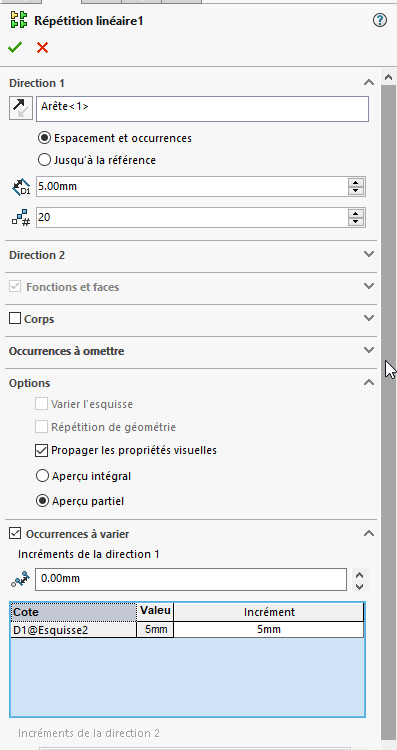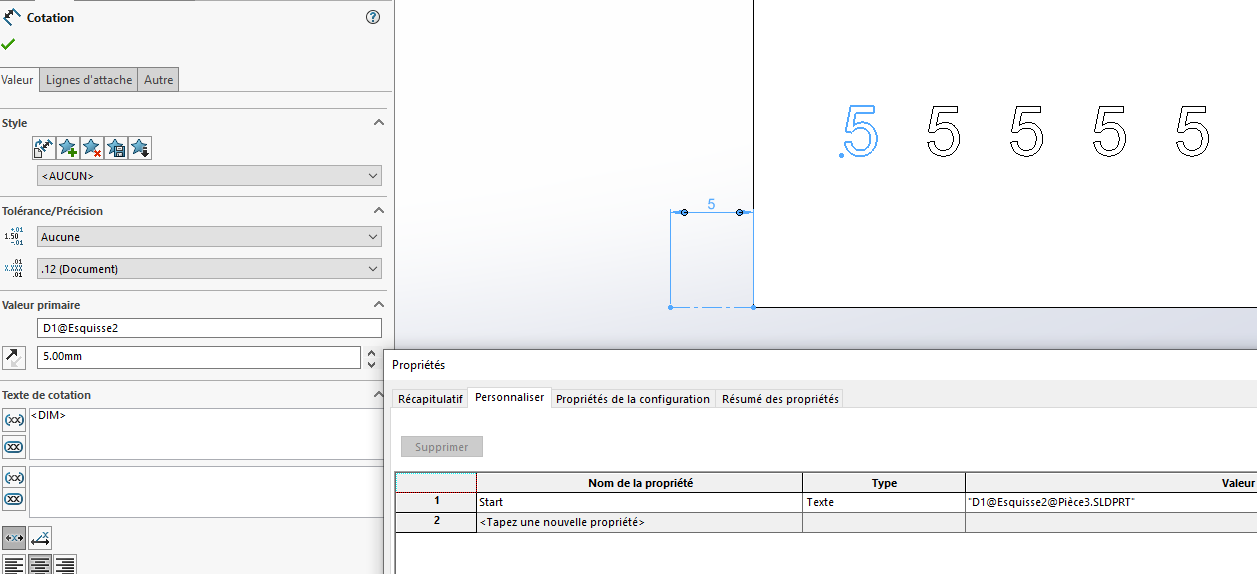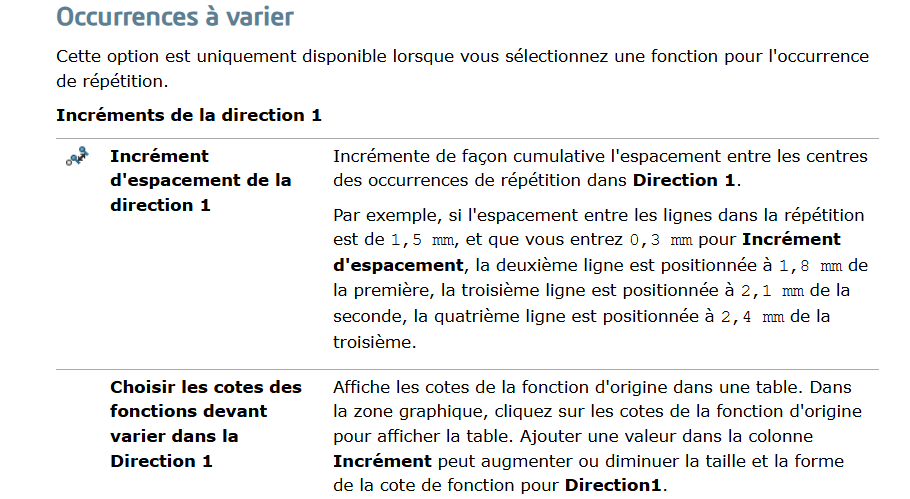Hello;
Rather than digging up old topics on the question of " is it possible to increment text in sketches "... (yes, yes, he does).
The goengineer.com site offers an interesting solution:
https://www.goengineer.com/blog/creating-incremental-numbers-in-solidworks-using-instances-to-vary
Article by Chris Villeneuve on February 19, 2025
Adding numbers to a template can be a repetitive and time-consuming process. In some cases, this process can be facilitated by using SOLIDWORKS pattern tools and their Vary functions. Let's take a look at the configuration and applications of this feature.
Linear pattern
In this example, I have a 6-inch ruler that needs numbers to designate the appropriate length markings.

I need to establish, numerically and spatially, where the series of numbers should begin. In this case, I'm going to start increasing from the 0.5-inch bar and continue in half-inch increments all the way up to 5.5 inches."
To do this, I need to bind a seed dimension value that will be incremented, to a custom property (in this case called "Start"). I'll then need to bind this custom property to sketch out text used to emboss or scratch the resulting value on the part.
Steps
- Create a sketch and add a dimension that will serve as the starting number in your design. In this case, " 0.5 ".
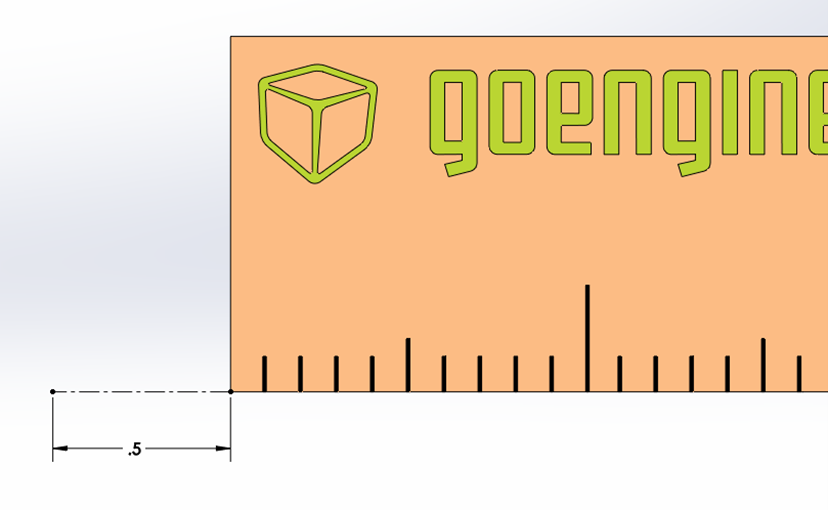
- Bind this dimension to a custom property.
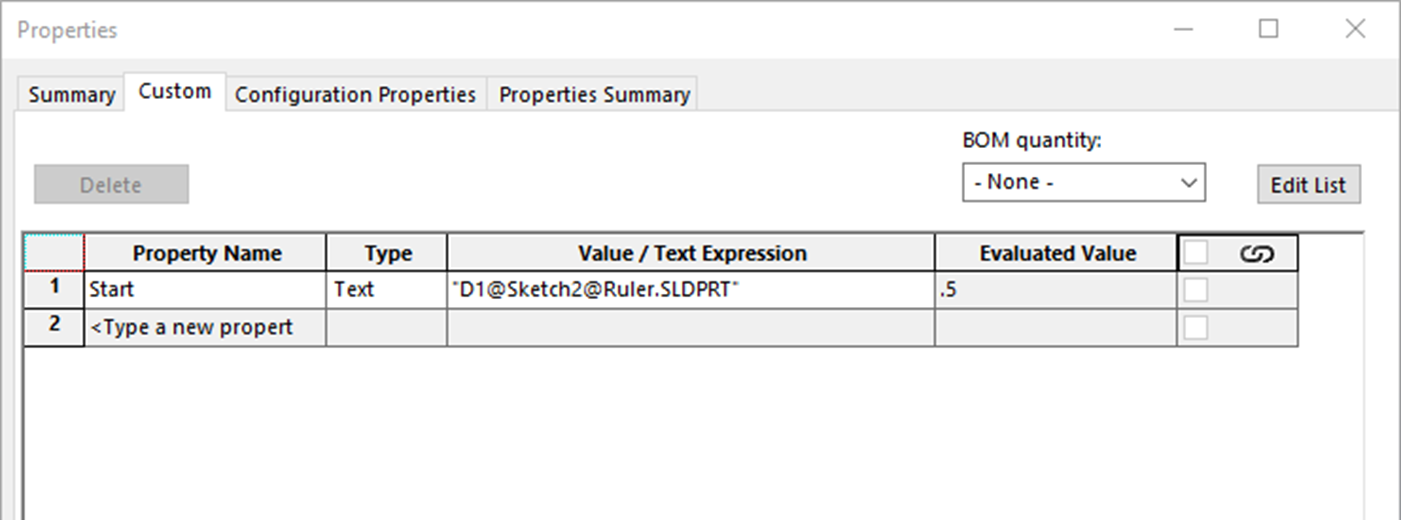
- Then, bind this custom property to sketch text at the location of your first bar mark.
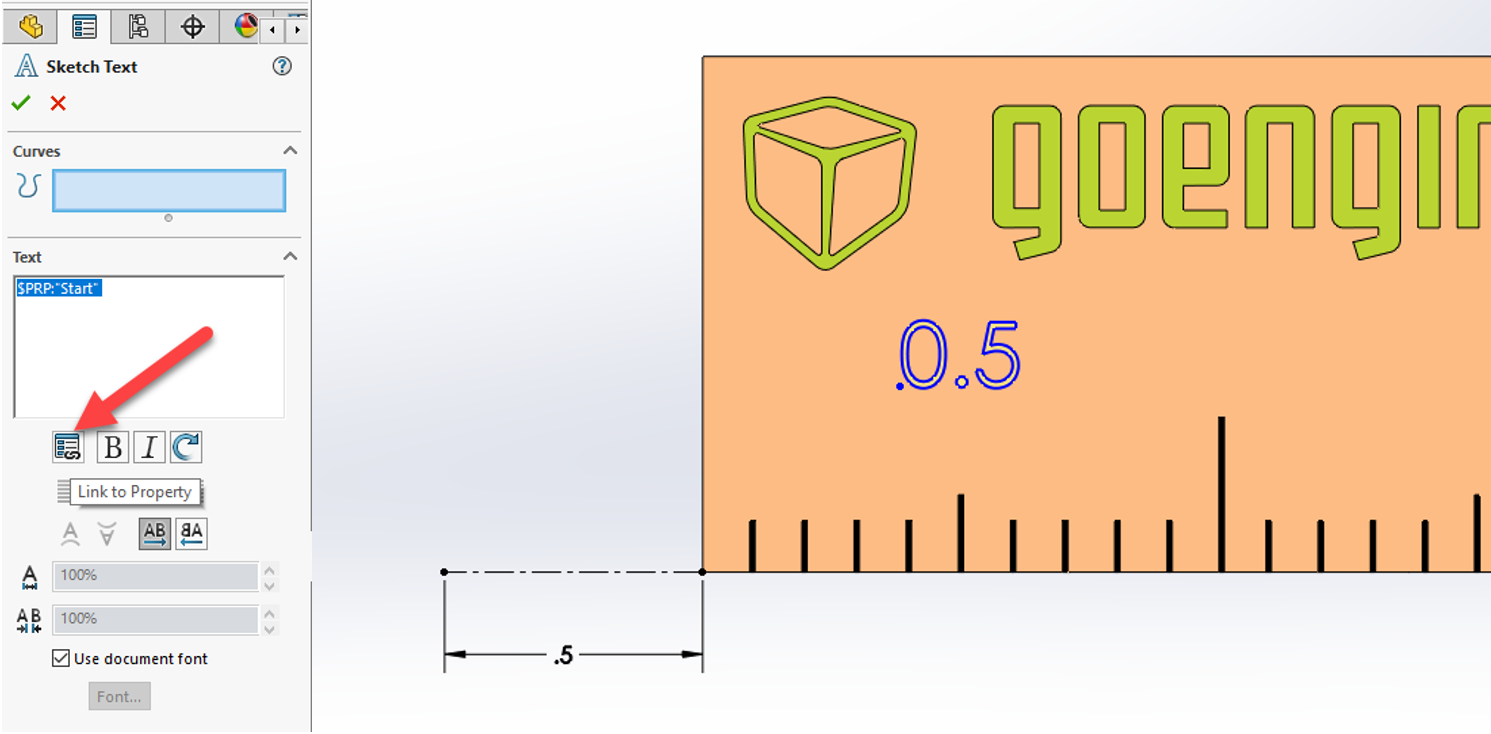
- Use the sketch to create either a cutout or an extrude feature.
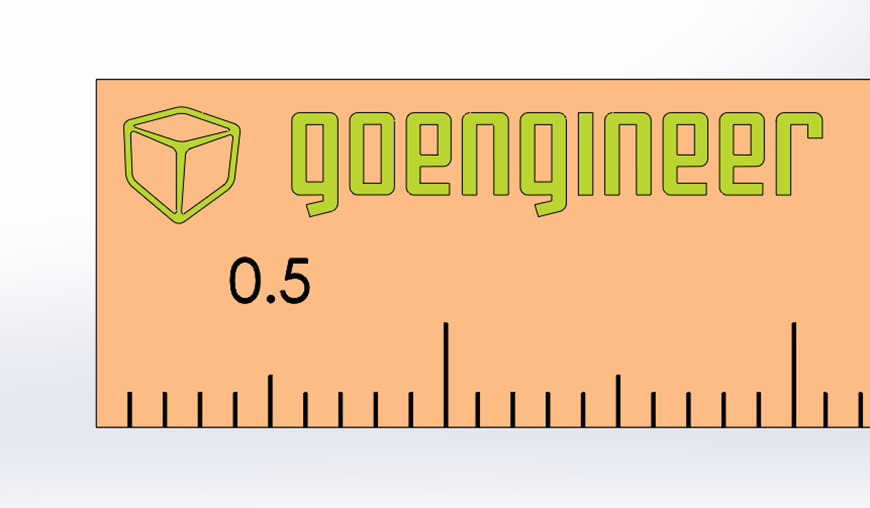
- Next, create a linear pattern that references the extrude or cut-out feature. In this example, I'll use the top edge of the part for pattern direction, 0.5" for spacing, and 11 for instance counting. Select the " Instances to Vary " checkbox and select the dimension you linked to the custom property. Then set the increment value to 0.5".
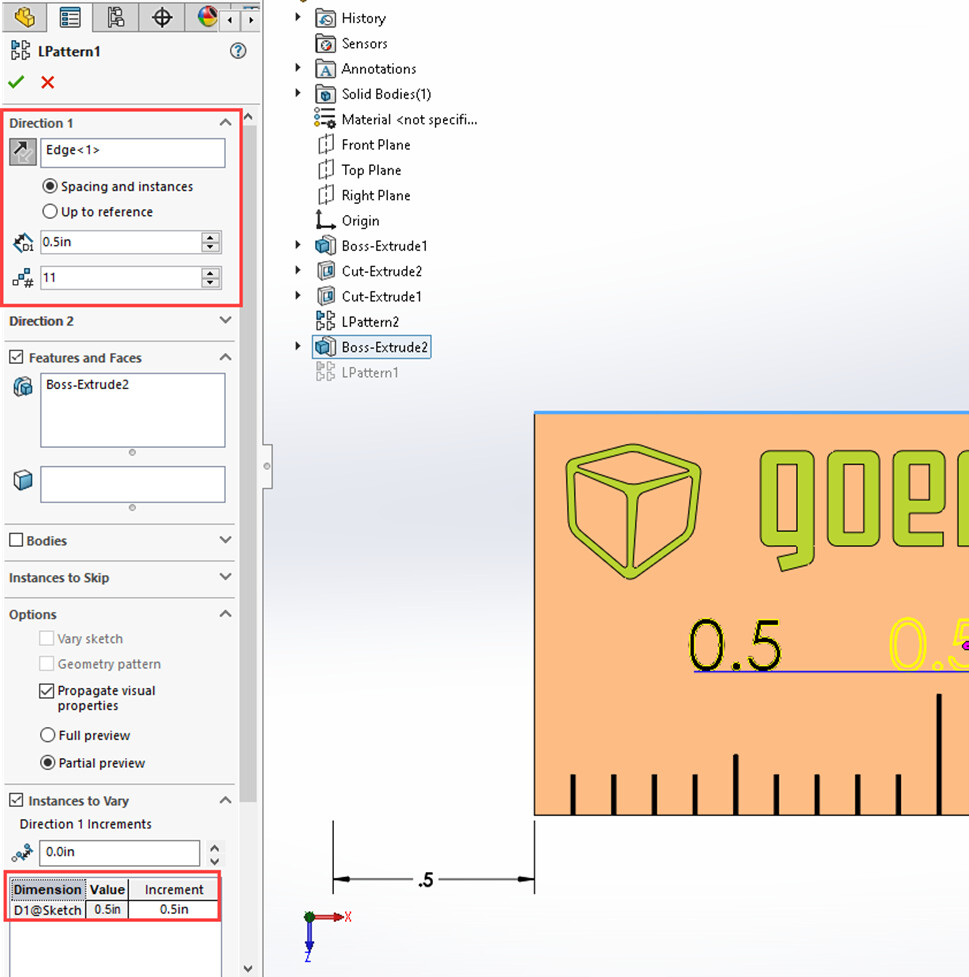
The resulting model will automatically increase by 0.5" units per instance generating the measurement marks.

The instament can vary in several directions and at different increment values. Here, the ax axis is incremented by 1, while the y-axis is incremented by 10.
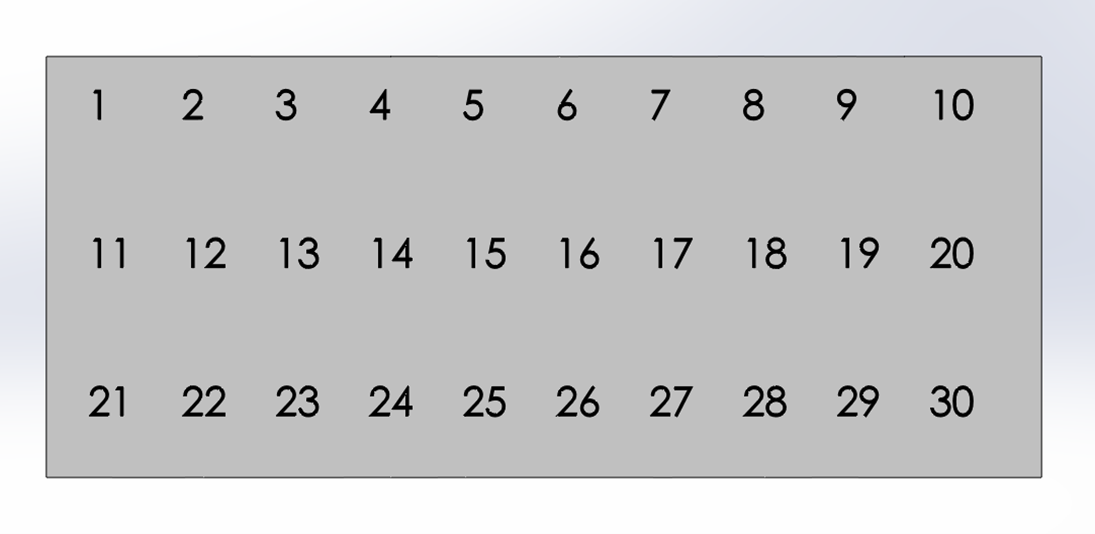
Change the starting value and increment to "2" for even numbers.
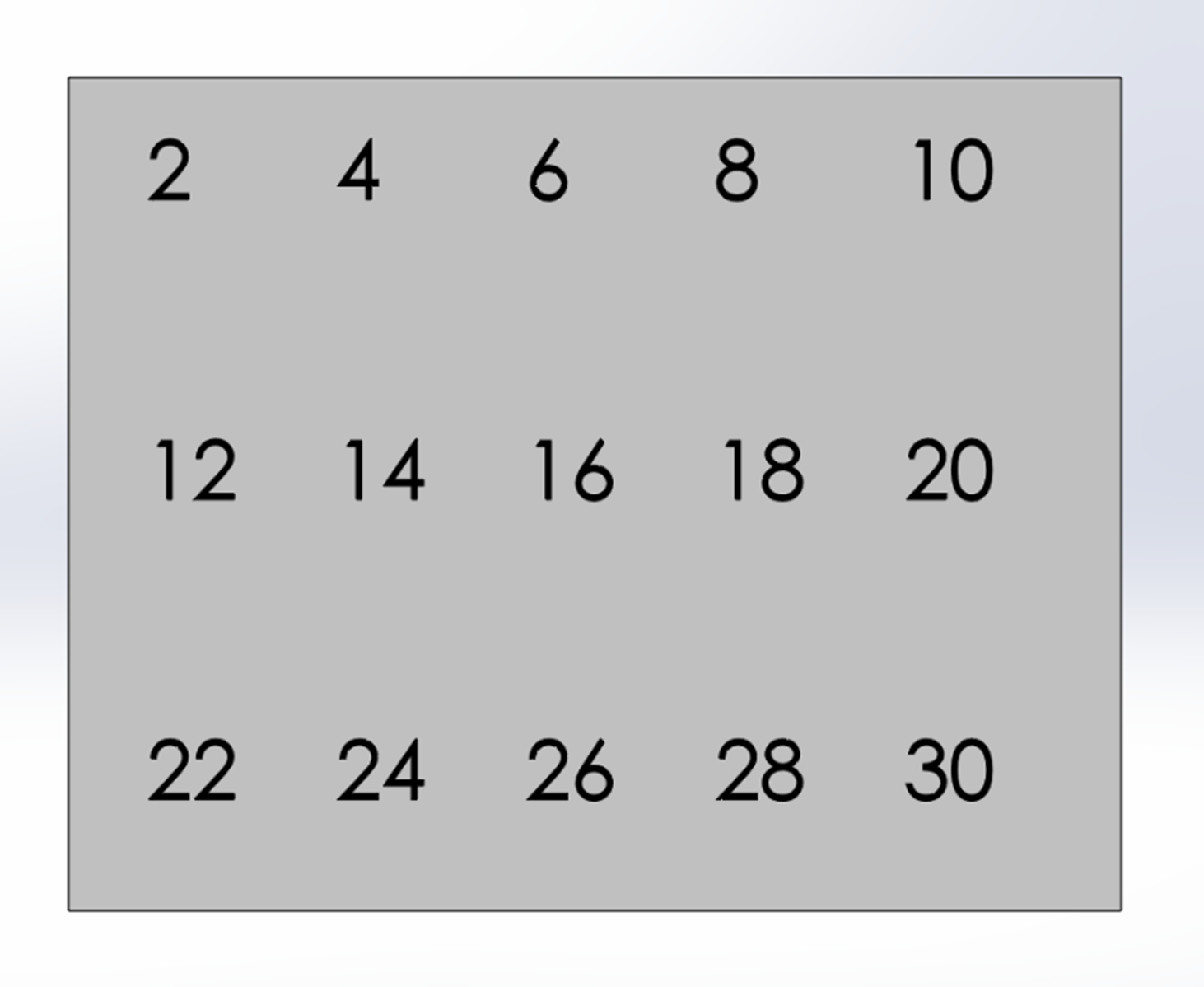
Use a circular pattern to generate the hours on a clock.
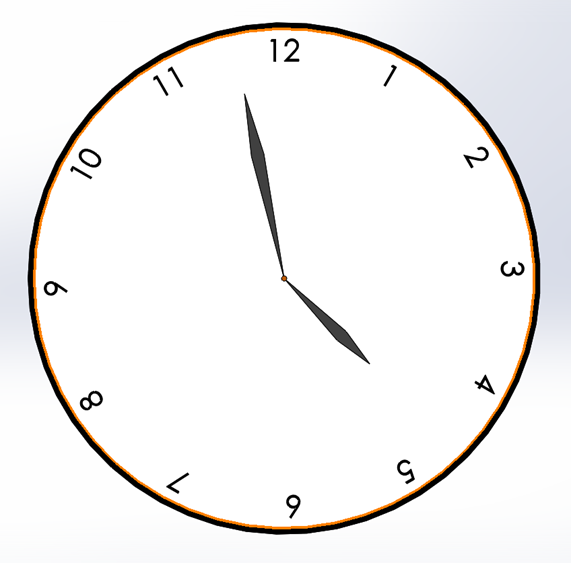
You can also model through multi-body parts for part numbering.
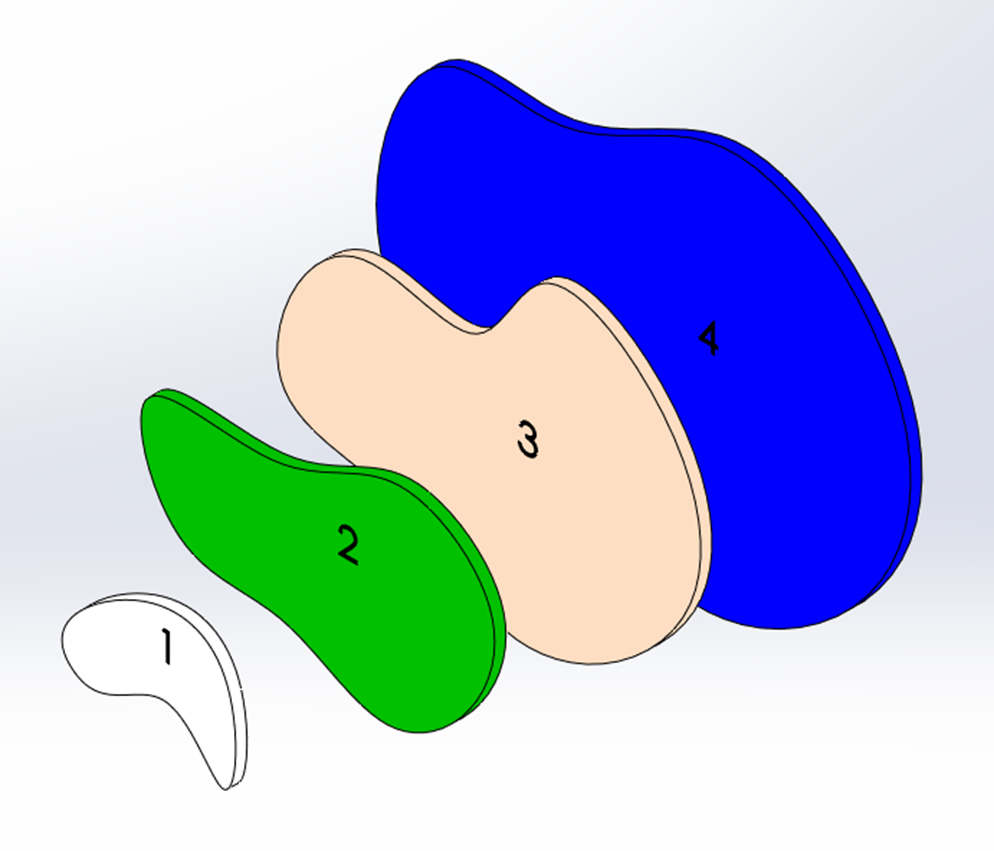
There are several ways to use structured tools to increase productivity and reduce repetitive tasks. I hope this article gives you some insight into how to better harness the power of SOLIDWORKS pattern features and their instances to the Vary function.
